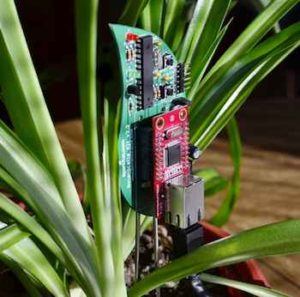I’m doing a lot of interviews these days around the future of agriculture. Maybe that’s because I’m doing a lot of keynotes in this field (pardon the pun), but also because a lot of searches for trends in agriculture hit my site.

Here’s the latest, from AgWeb / The Farm Journal Technology publication. You can find the original article here.
What will agriculture look like in 2043?
by Ben Potter, Farm Journal Technology, April 2013
Driverless tractors! Weed-zapping robots! Data-transmitting crops! Forecasting what farms will be like 30 years from now might seem an exercise in science fiction, but imagine how alien today’s farms might appear to someone from the early 1980s. Imagine pulling a farmer aside from that era and trying to explain telematics or precision ag technology. Imagine explaining what your smartphone can do.
Making a multi-decade forecast is a challenge, admits David Nicholson, head of research and development at Bayer CropScience.
“I always say we can look 10 years into the future because that’s how long research and development projects take,” he says. “We know what’s going to happen because it’s in our labs and our pipelines today.”
Anything beyond that window is trickier, says Nicholsen, who foresees a more localized precision ag experience.
“It will be precise,” he explains. “That seed in that bit of the field is working well. That same seed in that other bit of the field isn’t. Why? What’s different? We will have the tools to do plant-by-plant analysis.”
Noted futurist Jim Carroll takes the idea a step further. Plants might someday be able to analyze themselves, through genetic coding or embedded computer chips, he says. Do your plants need a nitrogen boost or a drink of water? They’ll send alerts directly to your computer.
“It’s not farfetched to think of intelligent plants with connectivity,” Carroll says. In fact, connectivity is a concept that will drive agricultural advancements as the next generation moves in.
“The farmer of 2043 is five today,” Carroll says. “He or she has never known a world without mobile devices and mass connectivity.”
Another driving force comes down to mathematics, says Ron Restum, vice president of North America sales with Koch Agronomic Services.
The generally accepted equation is a world population of 9 billion people by the year 2050 with a dwindling amount of available arable land. Therefore, Restum says farmers must produce more bushels per acre, or the numbers won’t pencil out.
Technology Driven. “Progress will have to be tech-driven,” Restum says. “We have to continue to be on the forefront of R&D.” Some technologies that sound far-flung should be staples before 2043, but technology and human concerns must be balanced before a product can be integrated.
The autonomous tractor is a prime example. Several companies have developed prototypes. John Deere has been working on driverless tractors for 5 to 10 years, according to Bob Dyar, a product manager with the company’s Intelligent Solutions Group.
“The real hurdles aren’t technological ones—they’re social ones,” Dyar says. How comfortable would you feel driving down the highway and seeing a driverless car alongside, he asks. A similar comfort level for driverless tractors will take time to develop, he says.
“It’s quite easy to make a tractor autonomous where it can drive itself,” Dyar says. “The challenge is making it perceptive, so you trust it not to hit a tree or the family dog.”
If farming goes “robotic,” will a farmer’s role fundamentally change? The farmer becomes the general, and the office serves as the command center where the troops (remote-controlled tractors, robots armed with lasers that identify and zap weeds and insects) are sent into battle each day.
What the farm of the future will look like is anybody’s guess, says Craig Ratajczyk, Illinois Soybean Association chief executive officer. “Significant changes are inevitable,” he says. “Thirty years from now, farming won’t look anything like it does today.”




GET IN TOUCH
Jim's Facebook page
You'll find Jim's latest videos on Youtube
Mastodon. What's on Jim's mind? Check his feed!
LinkedIn - reach out to Jim for a professional connection!
Flickr! Get inspired! A massive archive of all of Jim's daily inspirational quotes!
Instagram - the home for Jim's motivational mind!